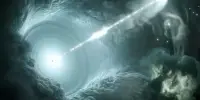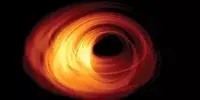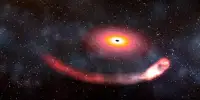The University of Michigan Library has displayed what they believed to be a 1609 manuscript written by Galileo Galilei himself with pride ever since 1938. Sadly, a history professor at Georgia State University’s examination reveals that the manuscript is an amazing fake that was made hundreds of years after Galileo’s passing.
The one-page paper was a letter draft that was intended to accompany Galileo’s presentation of a newly constructed telescope in 1609. The notes and sketches at the bottom of the paper, which would be considerably more significant if it weren’t forged (which it is), are believed to be Galileo’s observations of the moons of Jupiter made between January 7 and 15, 1610.
The book was first made available to the general public in May 1934, following an auction of the possessions of a recently dead collector named Roderick Terry. The manuscript was purchased by Tracy McGregor, another collector, who later left it to the University of Michigan in 1938 after his own passing. Since that time, the text has been a “gem” in the library’s collection—that is, until a historian revealed its falsity.
Nick Wilding, a historian who rose to prominence after he discovered a prior counterfeit of Galileo’s 1610 work Sidereus Nuncius, spoke with the library about the manuscript during his studies and sought information on the paper’s age and its watermark. Paper was frequently marked with distinctive watermarks during the hand press era. These watermarks aid historians in dating and identifying the location of paper, in addition to serving as a primary means of identifying it as their own.
The document, which is now recognized as a counterfeit, has Bergamo, Italy’s Bergamo written next to the monogram of the paper’s creator, “A.S.” Prior to 1770, which was a long time after Galileo’s passing and before the mark “BMO” started to become widely used, it had never been noticed on paper.
A second, comparable counterfeit that been dated to 1790 was discovered in the Morgan Library and Museum in New York City. Archbishop Maffei verified the authenticity of the Michigan Library’s copy in 1930 by contrasting it with two other works by Galileo. These papers, which were given by infamous forger Tobia Nicotra from the 20th century, proved to be frauds as well.
The study, according to the library, “concluded that our Galileo document is a 20th-century fake made by the well-known forger Tobia Nicotra.” We agreed with his assessment after our own experts carefully evaluated his article and provenance-related evidence and reexamined the document.
Nicotra entered multiple fake manuscripts into the Library of Congress and established a stellar name for himself as a forger. Police discovered a number of bogus autographs from Christopher Columbus, Martin Luther, Michelangelo, and Leonardo Da Vinci in his possession at the time of his arrest in the early 1930s, in addition to those from Abraham Lincoln.
The library issued a statement saying, “We’re grateful to Professor Wilding for sharing his discoveries. and are currently trying to decide what place the document should have in our collection.














